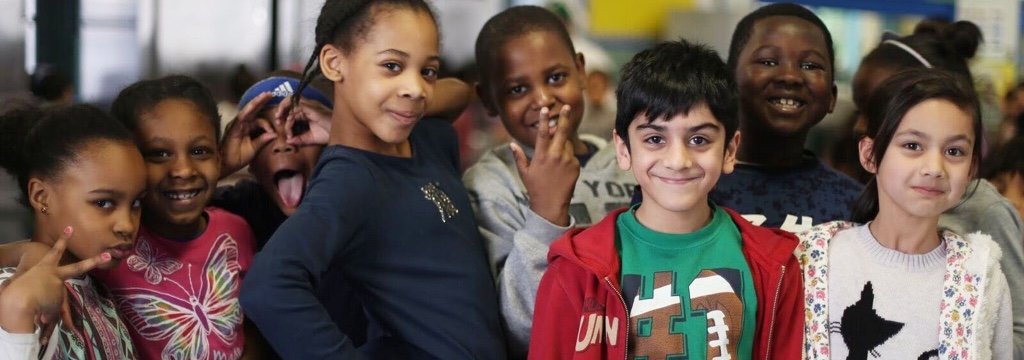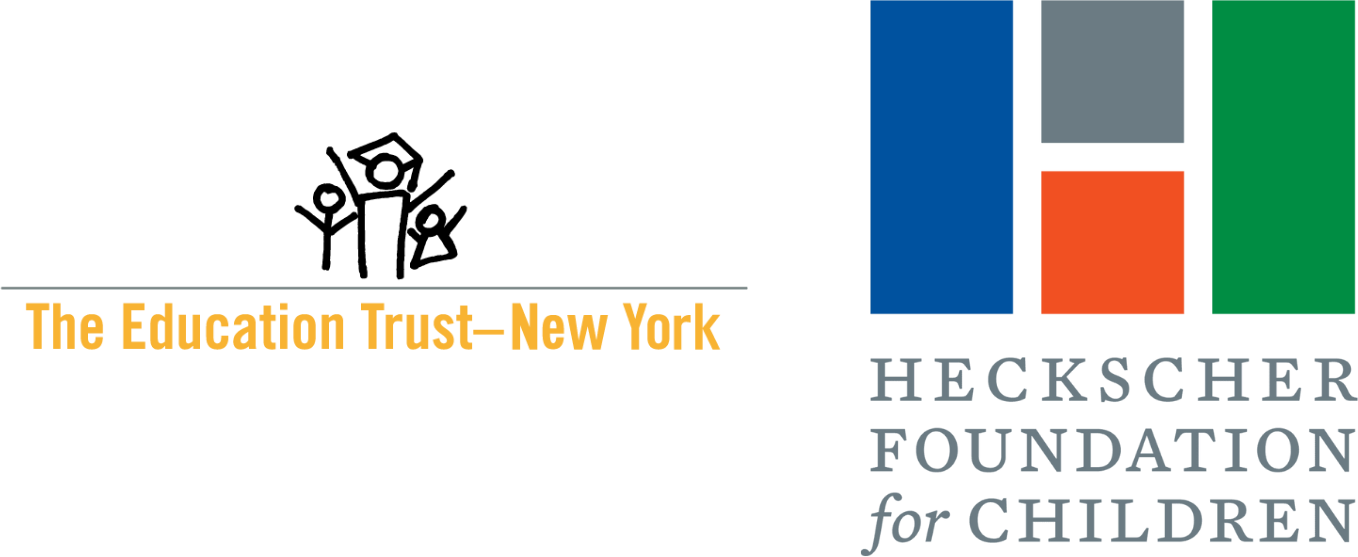School of the Future High School
Grades: 6-12Our Insights
What’s Special
A warm and creative school with challenging academics and strong leadership
The Downside
Awkward building layout
The School of the Future is a warm and creative place with demanding academics and a progressive approach to learning. Rather than take Regents exams, high school students complete 15- to 20-page research papers which they defend orally. By 11th grade, many students are tackling college-level work.
Kids who thrive here learn to speak up, take the initiative and get involved. They often work together in groups and write and read a lot. The tone throughout the school is calm and relaxed and there’s a respectful rapport among grownups and students.
The school does a good job challenging all students while also offering extra support to those who need it. There are the traditional courses in core subjects such as chemistry and trigonometry, but also offbeat ones like “American Social History and Rebels,” “Dreamers and Freaks” and “Do the Right Thing: Morality in Pop Culture, Literature and Your Life.” Advanced Placement and other college-level courses are offered in the upper grades too.
Teachers linger on topics to give students time to tackle a range of readings and explore answers to questions. For instance, in a high school class on democratization, students read and discussed at length an article on immigrant Jewish factory workers at the turn of the 20th-century as part of a broader study on Women’s Suffrage.
The school is part of the New York Performance Standards Consortium, a group of schools exempt from all Regents exams except for English. Eleventh- and 12th-graders write papers called “exhibitions” in English, math, history and science on topics of their own choosing. Some examples include how hundreds of years of white supremacy and Eurocentric standards of beauty impacted the connection between complexion and economic status and how the United States may suffer a similar fate to the Roman Empire, which fell after the decline of its middle class. Similarly, 8th-graders pick a topic, such as Greek myths or the Big Bang Theory, and present the information to 6th- and 7th-graders.
Longtime Principal Stacy Goldstein says conducting sophisticated research and writing extensively on topics of interest is much better preparation than taking standardized tests. “It’s a lot more authentic to what they’re going to have to do to in college,” she said.
Students are eased through the transition to middle and then high school. From 6th to 10th grade, students stay with the same group, moving from subject to subject together, so they come to know each other well. In middle school (grades 6-8) students take humanities, a two-period course that combines English and social studies and gives students an anchor teacher who they spend more time with each day.
Teachers run weekly, small-group student “circles” where they lead discussions on topics such as health, mindfulness, drug use and managing stress. Eleventh and 12th-graders are trained to mediate problems that arise among younger students
The school is housed in an aging building, and students and staff must negotiate narrow stairways to get to class. Students may use the newly-replaced elevator at the start and end of the school day. “The school is great in most ways except for the stairs,” explained an 8th-grader who plans to stay for high school. There’s air-conditioning in classrooms and common spaces and a roof garden complete with a greenhouse and picnic tables.
Students study Spanish in the middle school. In high school they may choose to continue their studies in Spanish or take Mandarin.
Arts classes include drama, music and visual arts. All students take a computer programming class and computer science.
An after-school school program for middle school students offers a nice range of activities including sports. High school students enjoy PSAL sports, clubs and off-site internships; some take courses for free at nearby CUNY colleges such as Baruch and Hunter.
There’s a strong college advisory program. The college counselor conducts weekly classes for juniors and seniors. On the day we visited, he was discussing the intricacies of obtaining financial aid to a group of seniors. All juniors take a free SAT prep course during their school day. Most students attend CUNY and SUNY colleges after graduation; roughly 20 percent attend private and out-of-state schools such as Pomona, NYU, Columbia, Middlebury, Skidmore and Hamilton.
SPECIAL EDUCATION: The school has two ICT (integrated co-teaching) classes per grade where a mix of general education and students with special needs are taught by two teachers, one certified in the subject and the other in special education. (Laura Zingmond, October 2017; updated 2020)
Get more from InsideSchools
School Stats
Is this school safe and well-run?
From the 2024-2025 NYC School Survey
From the 2019-20 NY State Report Card
From this school's most recent Quality Review Report
From the 2023-24 School Quality Report
How do students perform academically?
From the New York State 2023-2024 Assessment Database
From the 2023-24 School Quality Guide
Who does this school serve?
From the 2024-25 Demographic Snapshot
From the 2023-24 School Quality Guide
How does this school serve special populations?
From the 2023-24 School Quality Report
From the New York State 2023-2024 Assessment Database
Programs & Admissions
From the 2024 High School DirectorySchool of the Future (M83A)
Program Description:
This program requires students to complete an assignment as part of admissions. Soon, you will be able to upload your completed assignment through MySchools. Learn more at https://www.schools.nyc.gov/AssessmentHS/
Offerings
From the 2024 High School DirectoryAdvanced Courses
Algebra II (Advanced Math), AP Art History, AP Biology, AP Computer Science Principles, AP English Language and Composition, AP English Literature and Composition, AP Environmental Science, AP Psychology, AP Spanish Language and Culture, AP World History: Modern, Calculus (CPCC), Chemistry (Advanced Science), Econ/Gov (College Course [Uncredited]), ELA (CPCC), Math (College Course [Uncredited]), Math (CPCC), Physics (Advanced Science), Science (CPCC), US History (CPCC), World Languages (Advanced World Languages)
Boys PSAL teams
Baseball, Basketball, Soccer, Volleyball
Girls PSAL teams
Badminton, Basketball, Handball, Soccer, Softball, Volleyball
Read about admissions, academics, and more at this school on NYCDOE’s MySchools

Contact & Location
Location
127 East 22 Street
Manhattan
NY
10010
Buses: BM1, BM2, BM3, BM4, BxM10, BxM11, BxM18, BxM3, BxM4, BxM6, BxM7, BxM8, BxM9, M1, M101, M102, M103, M14A-SBS, M14D-SBS, M15, M15-SBS, M2, M23-SBS, M3, M34-SBS, M34A-SBS, M55, M7, M9, QM21, SIM10, SIM11, SIM1C, SIM3, SIM31, SIM33, SIM33C, SIM3C, SIM4C, SIM6, SIM7, SIM9, X27, X28, X37, X38, X63, X64, X68
Contact
Other Details
This school is in its own building.


Comments